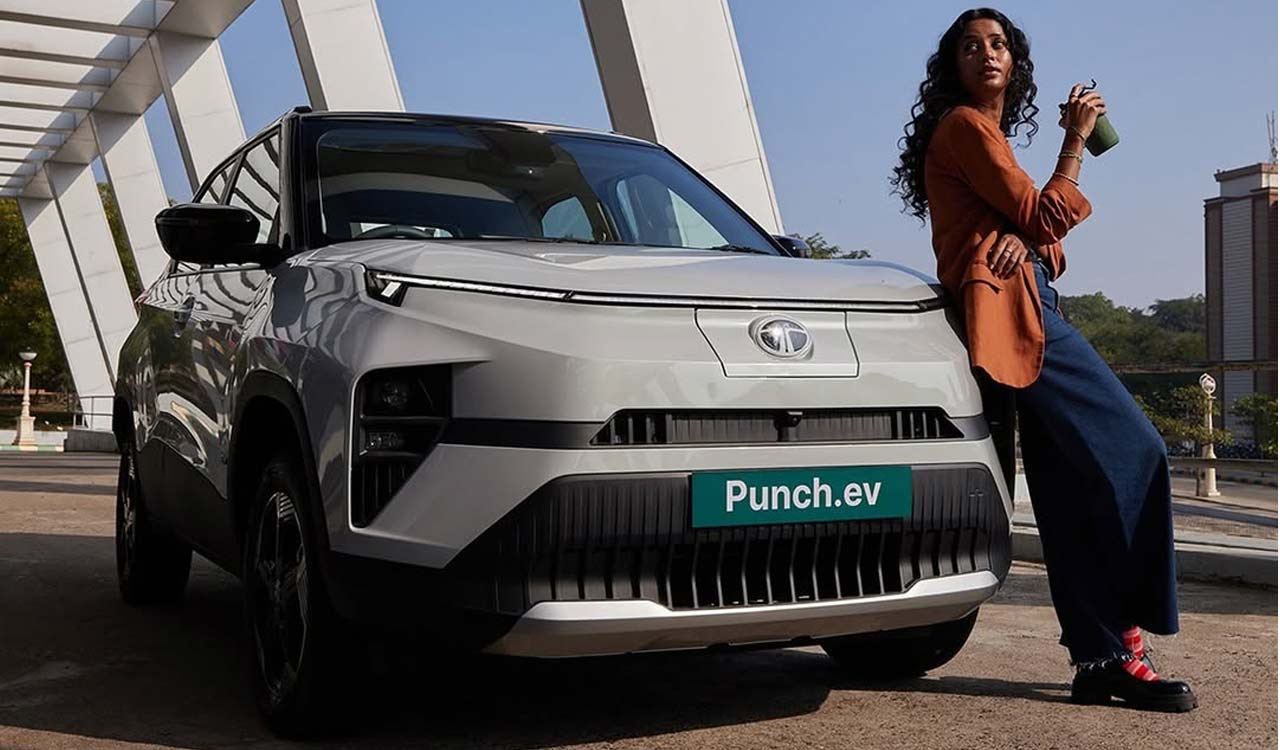Rewind: It’s Electric
As range anxiety eases and charging turns convenient, electric vehicles will no longer be just an alternative

By Amit Mishra
Between the cacophony of car horns and the putt-putt of autorickshaws, a gentler hum is taking over. Electric vehicles (EVs) are no longer a distant dream but a common sight zipping past steaming tea stalls and navigating through bustling traffic. From the captain of corporate India Mukesh Ambani sporting his new Tesla to the former captain of the Indian cricket team Mahendra Singh Dhoni (who likes cruising through the hills of Ranchi in his new KIA EV6), the interest in owning an EV is catching on.
However, the buzz and the exhilaration around EVs in India is not new. Reva, launched in June 2001, was a pioneer in this space. A zero-polluting, two-seater compact vehicle. Despite being ahead of its time, Reva’s technology could not fully resonate with the Indian market in the early 2000s. Constrained by an 8-hour recharge period for a meagre 80-kilometre range, Reva’s otherwise innovative electric technology proved too cumbersome for mass adoption in the early 2000s Indian market. And who can forget the newly opened Indian market in the 90s that led to a surge in demand for affordable, feature-rich vehicles, which Reva, with its focus on electric technology, could not entirely fulfil. Reva was acquired by Mahindra & Mahindra in 2010. This move laid the groundwork for Mahindra’s future foray into EVs, eventually culminating in the launch of the e2o electric hatchback in 2013.
Reva, launched in June 2001, was a pioneer in EV space but despite being ahead of its time, its technology could not fully resonate with the Indian market in the early 2000s
In the electric hum of progress, from Reva’s beginnings to today’s thriving EV landscape, India’s journey echoes the timeless rhythm of adaptation and possibility.
Evolving Landscape
The automotive industry in India is experiencing a major transformation, with a notable shift in demand from traditional petrol and diesel-powered vehicles to those using EVs. This transformation is underscored by a wealth of compelling data:
In FY24, India witnessed an electrifying revolution in its automotive landscape. Nearly 2 million EVs hit the roads, setting a new record and marking a jaw-dropping 41% annual increase — the highest leap the country has ever seen. Every day, an average of 4,600 EVs were sold, a sharp rise from 3,240 units the previous year, showcasing a rapid embrace of electric vehicles by consumers.
The electric car segment, in particular, experienced phenomenal growth, soaring 90% year-on-year. This highlights the vast, untapped potential of the e-car market, especially if it were to benefit from the same incentives that boost the electric two-wheelers (E2Ws) and electric three-wheelers (E3Ws) under the Faster Adoption and Manufacturing of Hybrid and Electric Vehicles (FAME) programme.
The electric three-wheeler (E3Ws) cargo sector also rode a wave of success, with sales climbing 83%, fueled by the booming logistics and e-commerce sectors and favourable pricing. Meanwhile, the E2W segment enjoyed a respectable 29% growth over the last year, with EV penetration reaching 5.39% for FY24. This segment is consolidating, with industry giants Ola, TVS and Bajaj Auto commanding a substantial 65.49% market share. Leading the charge, TVS and Ola Electric posted remarkable year-on-year growth rates of 122% and 114%, respectively.
An average of 4,600 EVs were sold daily in FY24, a sharp rise from 3,240 units the previous year
In the E3W segment, the passenger category experienced 53% year-on-year growth, boasting the highest EV penetration at 56%, driven by cost-effective pricing. Mahindra emerged as a dominant player in both the E3W passenger and cargo segments, recording impressive growth rates of 69% and 67%, respectively.
Despite a limited number of models, the e-car segment saw significant growth, with Mahindra’s sales skyrocketing from 485 units in FY23 to 6,058 units in FY24. The e-bus segment also surged, with sales increasing by 79% year-on-year, and Tata Motors capturing a 50% market share.
Looking ahead, sales of EVs in India are projected to soar by another 66% this year, driven by robust state subsidies and the expansion of supporting infrastructure. The electric wave is here, and it’s only getting stronger.
Industry giants OLA, TVS and Bajaj Auto command a substantial 65.49% market share in the electric two-wheeler segment
Government Initiatives
Without the government’s supportive policy initiatives, India’s EV push would have faced significant challenges. By basing the foundations on the policies, it’s a dual win — boosting both the economy and the nation’s goal of net zero emissions by 2070. To facilitate this smooth transition, the government has implemented several key measures. FAME, launched in 2015, tackles two key challenges: reducing dependence on fossil fuels and combating vehicle emissions. The programme is in its second phase called FAME II, running from April 1, 2019, with a budget of Rs10,000 crore spread over five years.
The e-car segment saw significant growth, with Mahindra’s sales skyrocketing from 485 units in FY23 to 6,058 units in FY24
The Production Linked Incentive (PLI) Scheme for the Automotive Sector offers financial incentives to companies that manufacture electric or hydrogen-powered vehicles and high-tech components in India. With a budget of $3.1 billion, it has already attracted over $9 billion in proposed investments, exceeding expectations. The PLI Scheme for the National Programme on Advanced Chemistry Cell (ACC) Battery Storage aims to create a strong domestic battery manufacturing sector by offering incentives for companies that produce advanced batteries in India.
In addition to these established measures, recent developments have further propelled the country’s EV ambitions. India unveiled a groundbreaking EV policy in April. Under this policy, companies investing at least $500 million in setting up manufacturing units in India will receive import duty concessions. Manufacturers establishing EV passenger car facilities can import a limited number of cars at a reduced customs duty of 15% for vehicles priced at $35,000 and above, for a five-year period. Experts believe the policy will turn India into a global manufacturing hub for EVs, emphasising significant domestic value addition and technological advancement.
These initiatives will not only strengthen India’s position in the global EV market but also underscore its commitment to sustainable development and economic growth.
India and the World
ShervinPishevar, the famous venture capitalist, once aptly put it, “We are at the dawn of a new era in transportation.” This statement rings true as validated by the latest figures in the Global EV Outlook by the International Energy Agency, which paints an exciting picture for 2024. The report predicts global electric car sales to skyrocket to 17 million by year-end. The first quarter saw a stunning 25% increase in sales from the same period in 2023, maintaining last year’s rapid growth but on a much larger scale. Impressively, the number of electric cars sold in just the first three months of this year equals the total sold throughout 2020.
China is set to dominate, with electric car sales expected to hit 10 million, comprising 45% of all car sales in the nation. In the US, one out of every nine cars sold will likely be electric, while Europe, despite a tepid outlook for passenger car sales and subsidy reductions in some areas, will still see EVs making up one in four cars sold.
Despite surpassing 1.5 million unit sales in 2023, EV adoption remains sluggish at just 1% of total car sales primarily due to lack of charging infrastructure, taxes and safety concerns
As usual, leading the wagon in the world is Tesla Motors, which has captured 20% of the global market and is at the top with China’s BYD biting the silver medal at the second with 17%. As the global dominance for the EV is underway, India is somewhere battling the brunt within. The Indian market is poised to witness a potentially fierce duel between established domestic leader Tata Motors and the aspiring global entrant, Tesla, which is actively exploring the Indian market. The key battle lines will likely be drawn around price, range and charging infrastructure.
Tata Motors currently holds the advantage in terms of affordability, catering to a budget-conscious market with its existing EV models. However, whispers of a more affordable Tesla model for India threaten to disrupt this advantage. To exacerbate the situation, Chinese EV giant BYD has also expressed interest in establishing a manufacturing facility in the country. Ultimately, the victor in this potential EV showdown will not be solely determined by Tata or Tesla. The company that can most effectively adapt to Indian consumer preferences, offer a compelling combination of price, range and readily available charging infrastructure while significantly contributing to building a robust EV ecosystem will emerge as the true leader. This high-octane race has just begun.
Tesla Motors has captured 20% of the global market and is at the top with China’s BYD following with 17%
The Road Ahead
With a projected compound annual growth rate (CAGR) of 66.52%, the EV market is estimated to jump from $3.21 billion to a staggering $113.99 billion in the next six years, translating to a projected 80 million electric vehicles on Indian roads by 2030. The EV battery market is also poised for a boom, with a projected growth from $16.77 billion in 2023 to $27.70 billion by 2028.
As the Indian market for EVs gets intense, more and more are joining the race. This surge in activity, along with continuous advancements in battery technology and infrastructure development, suggests a future where electric vehicles will become not just an alternative, but the preferred choice for consumers. As range anxiety eases and charging turns more convenient, India could see a smooth transition to a cleaner and greener transportation landscape powered by electric mobility.
Joining the race
Tata Motors, currently dominating the Indian EV market, plans to expand its electric offerings from 4 models to 10 in the next few years
- Aims for EVs to be 25% of its total sales by 2025
Mahindra is launching new electric SUVs and expects electric models to make up 20-30% of its SUV sales by 2027
Hyundai India, currently selling 2 electric models, plans to introduce 5 more variants by 2032
- Lines up nearly $4 billion for in new EVs, charging stations, and a battery pack assembly unit. Plans to significantly increase charging station network to 439 by 2027
Maruti Suzuki, India’s top seller, to roll out 6 electric models by 2030
Newcomer JSW Group is investing nearly $5 billion in an EV and battery manufacturing project in eastern India
- Is reportedly in talks with Volkswagen for technology and components

(The author is research scholar at IMT Hyderabad)
Related News
-
Hyderabad: Couple working as house help at doctor’s residence held for theft
7 mins ago -
Hyderabad auto driver foils attempt to kidnap young woman, five held
51 mins ago -
Haiti gang attack on journalists covering hospital reopening leaves 2 dead, several wounded
2 hours ago -
21 dead as Mozambique erupts in violence after election court ruling
2 hours ago -
Cartoon Today on December 25, 2024
10 hours ago -
Sandhya Theatre stampede case: Allu Arjun questioned for 3 hours by Chikkadpallly police
11 hours ago -
Telangana: TRSMA pitches for 15% school fee hike and Right to Fee Collection Act
11 hours ago -
Former Home Secretary Ajay Kumar Bhalla appointed Manipur Governor, Kerala Governor shifted to Bihar
11 hours ago




